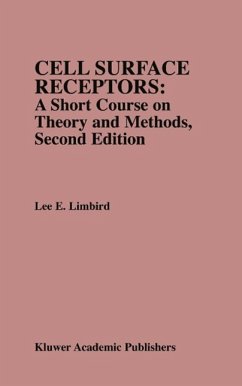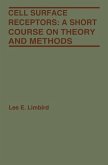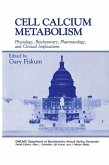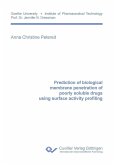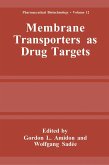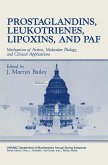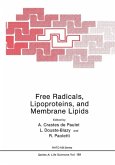Lee E. Limbird
Cell Surface Receptors: A Short Course on Theory and Methods (eBook, PDF)
A Short Course on Theory and Methods
112,95 €
112,95 €
inkl. MwSt.
Sofort per Download lieferbar

56 °P sammeln
112,95 €
Als Download kaufen

112,95 €
inkl. MwSt.
Sofort per Download lieferbar

56 °P sammeln
Jetzt verschenken
Alle Infos zum eBook verschenken
112,95 €
inkl. MwSt.
Sofort per Download lieferbar
Alle Infos zum eBook verschenken

56 °P sammeln
Lee E. Limbird
Cell Surface Receptors: A Short Course on Theory and Methods (eBook, PDF)
A Short Course on Theory and Methods
- Format: PDF
- Merkliste
- Auf die Merkliste
- Bewerten Bewerten
- Teilen
- Produkt teilen
- Produkterinnerung
- Produkterinnerung

Bitte loggen Sie sich zunächst in Ihr Kundenkonto ein oder registrieren Sie sich bei
bücher.de, um das eBook-Abo tolino select nutzen zu können.
Hier können Sie sich einloggen
Hier können Sie sich einloggen
Sie sind bereits eingeloggt. Klicken Sie auf 2. tolino select Abo, um fortzufahren.

Bitte loggen Sie sich zunächst in Ihr Kundenkonto ein oder registrieren Sie sich bei bücher.de, um das eBook-Abo tolino select nutzen zu können.
Cell Surface Receptors: A Short Course on Theory and Methods, Second Edition is a primer for the study of cell surface receptors. The simplified discussion of methods and their underlying principles removes the usual intimidation caused by the specialized vocabulary or sophisticated mathematics that characterize many of the primary papers in this field. In this way, the basic concepts become emphasized. This volume is a starting point: a textbook as well as a manual to which the investigator can return for a refresher course, when needed.
- Geräte: PC
- ohne Kopierschutz
- eBook Hilfe
- Größe: 55.78MB
Andere Kunden interessierten sich auch für
![Cell Surface Receptors (eBook, PDF) Cell Surface Receptors (eBook, PDF)]() Lee E. LimbirdCell Surface Receptors (eBook, PDF)40,95 €
Lee E. LimbirdCell Surface Receptors (eBook, PDF)40,95 €![Cell Calcium Metabolism (eBook, PDF) Cell Calcium Metabolism (eBook, PDF)]() Cell Calcium Metabolism (eBook, PDF)40,95 €
Cell Calcium Metabolism (eBook, PDF)40,95 €![New Insights into Cell and Membrane Transport Processes (eBook, PDF) New Insights into Cell and Membrane Transport Processes (eBook, PDF)]() New Insights into Cell and Membrane Transport Processes (eBook, PDF)40,95 €
New Insights into Cell and Membrane Transport Processes (eBook, PDF)40,95 €![Prediction of biological membrane penetration of poorly soluble drugs using surface activity profiling (eBook, PDF) Prediction of biological membrane penetration of poorly soluble drugs using surface activity profiling (eBook, PDF)]() Prediction of biological membrane penetration of poorly soluble drugs using surface activity profiling (eBook, PDF)21,84 €
Prediction of biological membrane penetration of poorly soluble drugs using surface activity profiling (eBook, PDF)21,84 €![Membrane Transporters as Drug Targets (eBook, PDF) Membrane Transporters as Drug Targets (eBook, PDF)]() Membrane Transporters as Drug Targets (eBook, PDF)160,95 €
Membrane Transporters as Drug Targets (eBook, PDF)160,95 €![Prostaglandins, Leukotrienes, Lipoxins, and PAF (eBook, PDF) Prostaglandins, Leukotrienes, Lipoxins, and PAF (eBook, PDF)]() Prostaglandins, Leukotrienes, Lipoxins, and PAF (eBook, PDF)160,95 €
Prostaglandins, Leukotrienes, Lipoxins, and PAF (eBook, PDF)160,95 €![Free Radicals, Lipoproteins, and Membrane Lipids (eBook, PDF) Free Radicals, Lipoproteins, and Membrane Lipids (eBook, PDF)]() Free Radicals, Lipoproteins, and Membrane Lipids (eBook, PDF)40,95 €
Free Radicals, Lipoproteins, and Membrane Lipids (eBook, PDF)40,95 €-
-
-
Cell Surface Receptors: A Short Course on Theory and Methods, Second Edition is a primer for the study of cell surface receptors. The simplified discussion of methods and their underlying principles removes the usual intimidation caused by the specialized vocabulary or sophisticated mathematics that characterize many of the primary papers in this field. In this way, the basic concepts become emphasized. This volume is a starting point: a textbook as well as a manual to which the investigator can return for a refresher course, when needed.
Dieser Download kann aus rechtlichen Gründen nur mit Rechnungsadresse in A, B, BG, CY, CZ, D, DK, EW, E, FIN, F, GR, HR, H, IRL, I, LT, L, LR, M, NL, PL, P, R, S, SLO, SK ausgeliefert werden.
Produktdetails
- Produktdetails
- Verlag: Springer US
- Seitenzahl: 256
- Erscheinungstermin: 6. Dezember 2012
- Englisch
- ISBN-13: 9781461312550
- Artikelnr.: 44178744
- Verlag: Springer US
- Seitenzahl: 256
- Erscheinungstermin: 6. Dezember 2012
- Englisch
- ISBN-13: 9781461312550
- Artikelnr.: 44178744
- Herstellerkennzeichnung Die Herstellerinformationen sind derzeit nicht verfügbar.
1 Historical perspective.- The origin of the receptor concept.- Mass action law and occupancy theory.- The concept of efficacy.- The concept of spare receptors.- Rate theory.- Allosteric theory.- Operational models of pharmacological agonism.- Summary.- 2 Methods for characterization of receptors based on receptor-mediated responses in tissue or intact cell preparations.- Characterization of receptor specificity.- Generalizations regarding the determination of equilibrium dissociation constants (KD values) for receptor-ligand interactions in intact tissue preparations.- Determination of KD values for receptor-agonist interactions, KDA.- Determination of KD values for receptor-partial agonist interactions, KDP.- Determination of KD values for receptor-antagonist interactions, KDB.- Summary.- 3 Identification of receptors using direct radioligand binding techniques.- Methods-data generation.- Choice of a radioligand.- The incubation.- Separation of bound from free radioligand.- Criteria expected for binding of D to the physiological receptor, R.- Data obtained to establish the criteria for a physiologically relevant receptor.- Summary.- 4 Complex binding phenomena.- Mathematical descriptions of complex binding phenomena.- Computer-assisted analysis of complex binding phenomena.- Analysis of receptor subtypes.- Independent data consistent with the existence of receptor subtypes.- Receptor affinity states.- The ternary complex model (TCM) and expansions of the TCM.- Thermodynamic parameters of receptor-ligand interactions.- Summary.- 5 The preparation and study of detergent-solubilized receptors.- General properties of biological membranes and detergent micelles.- Choice of a biological detergent.- Solubilizing receptors from biological membranes.- Methods for analysis ofdetergent-solubilized receptors.- Summary.- 6 The topographical fate of ligand-receptor complexes as reflected by the properties of ligand binding to intact cells.- Biochemical approaches for discriminating between cell surface receptors versus intracellular receptor-ligand complexes.- Biochemical evidence consistent with recycling of cell surface receptors.- Assessment of rate constants for receptor turnover using a steady state mathematical analysis of intact cell radioligand binding data.- The heavy amino acid density-shift technique for quantitating receptor synthesis and turnover.- Summary.
1 Historical perspective.- The origin of the receptor concept.- Mass action law and occupancy theory.- The concept of efficacy.- The concept of spare receptors.- Rate theory.- Allosteric theory.- Operational models of pharmacological agonism.- Summary.- 2 Methods for characterization of receptors based on receptor-mediated responses in tissue or intact cell preparations.- Characterization of receptor specificity.- Generalizations regarding the determination of equilibrium dissociation constants (KD values) for receptor-ligand interactions in intact tissue preparations.- Determination of KD values for receptor-agonist interactions, KDA.- Determination of KD values for receptor-partial agonist interactions, KDP.- Determination of KD values for receptor-antagonist interactions, KDB.- Summary.- 3 Identification of receptors using direct radioligand binding techniques.- Methods-data generation.- Choice of a radioligand.- The incubation.- Separation of bound from free radioligand.- Criteria expected for binding of D to the physiological receptor, R.- Data obtained to establish the criteria for a physiologically relevant receptor.- Summary.- 4 Complex binding phenomena.- Mathematical descriptions of complex binding phenomena.- Computer-assisted analysis of complex binding phenomena.- Analysis of receptor subtypes.- Independent data consistent with the existence of receptor subtypes.- Receptor affinity states.- The ternary complex model (TCM) and expansions of the TCM.- Thermodynamic parameters of receptor-ligand interactions.- Summary.- 5 The preparation and study of detergent-solubilized receptors.- General properties of biological membranes and detergent micelles.- Choice of a biological detergent.- Solubilizing receptors from biological membranes.- Methods for analysis ofdetergent-solubilized receptors.- Summary.- 6 The topographical fate of ligand-receptor complexes as reflected by the properties of ligand binding to intact cells.- Biochemical approaches for discriminating between cell surface receptors versus intracellular receptor-ligand complexes.- Biochemical evidence consistent with recycling of cell surface receptors.- Assessment of rate constants for receptor turnover using a steady state mathematical analysis of intact cell radioligand binding data.- The heavy amino acid density-shift technique for quantitating receptor synthesis and turnover.- Summary.
